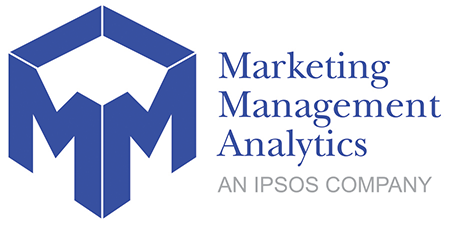The Current State of Marketing Mix Modeling and Marketers’ Concerns Discussed at Google SuMMMit 2024
 Ipsos MMA’s Doug Brooks, EVP and Chief Client Officer, provided his expertise as a panelist at Google SuMMMit 2024 to address the challenges faced today by Marketing Mix Modeling. The thought-provoking questions discussed during the panel reflect the everyday concerns of marketers. Google hosted this summit to bring industry marketing mix modeling leaders and advertisers together to share insights, challenges, successes and solutions of today as well as thoughts on what the future holds.
Ipsos MMA’s Doug Brooks, EVP and Chief Client Officer, provided his expertise as a panelist at Google SuMMMit 2024 to address the challenges faced today by Marketing Mix Modeling. The thought-provoking questions discussed during the panel reflect the everyday concerns of marketers. Google hosted this summit to bring industry marketing mix modeling leaders and advertisers together to share insights, challenges, successes and solutions of today as well as thoughts on what the future holds.
“When you think about where marketing mix modeling has been and where it has the potential to go, what’s the one area of innovation you’re most excited to see develop in the next few years and why?”
Doug Brooks: Over the past 3-5 years, we have witnessed rapid growth in the marketing mix modeling maturity curve within industries that were already passionate users of this capability. Moreover, new sectors like B2B, digital-only, social gaming, entertainment, and travel are joining the marketing mix modeling movement.
Marketing Mix Modeling has historically been a quarterly or semi-annual tool utilized to guide strategic direction, budget planning and allocation, and media optimization. The expanding range of direct data integrations across platforms, combined with advanced applications of ML/AI (enabling speed, quality control, and uncovering hidden synergies/interactions), has empowered us to transition to an ‘always-on’ and fully closed loop system with brands. What excites us at Ipsos MMA is the opportunity to finally unlock the full potential of MMM for brands by facilitating timely decision-making, validating results transparently, and maximizing the effectiveness and efficiency of media through improved activation of model recommendations and tracking of value delivered to the brand..
“How are marketing mix models evolving to meet the needs of the market?”
Doug Brooks: It’s no surprise that the measurement landscape has changed significantly over the past 5 years as a result of cookie deprecation, privacy concerns, challenges with identity resolution and more stringent data-sharing policies. This has left a significant gap in measurement as traditional multi-touch attribution (MTA) solutions are proving obsolete.
Marketers and their agency partners are demanding more granularity, speed and connectivity to media buying and planning tools and the advancements in this space are enabling it.
Those with technical backgrounds might argue that more granularity and more variables = an over-specified model which then puts the reliability of results into question. That is certainly the case when implementing traditional and aggregate Marketing Mix Modeling approaches. But that is not the case anymore.
- Ipsos MMA is ingesting more granular data through direct data integrations with platforms such as Google, META and many others.
- New approaches to model-based attribution such as Ipsos MMA’s Agile Attribution Approach that take advantage of Machine Learning approaches, privacy-safe aggregates, and 1st party data are enabling fast, granular (platform, campaign/creative, audience, ad format) measurement with a focus on incrementality. Integrating these models with testing that allows for the validation of recommendations, inclusion of new media investments (priors), and continuous model recalibration has greatly improved the quality of analytics and provided valuable support for change management.
- Our Demand Signals solution has also been a game changer for us. The solution can capture interactions between marketplace dynamics/economic factors and media effectiveness enabling our clients to produce future business scenarios that are based on the potential reality next quarter, next year, etc.
“What types of new questions are marketers asking their marketing mix models? What questions are they asking that maybe they shouldn’t?”
Doug Brooks: One of the key indicators that you have reached the tipping point of adoption on a marketing mix modeling solution is when the business questions shift from vendor-driven queries to user-initiated inquiries from cross-functional users. This demonstrates that they understand the models, believe in them, and recognize the opportunity.
What everyone asks:
- How to balance upper, mid, lower funnel marketing?
- How to optimize marketing to achieve multiple objectives across the funnel?
- What is the impact of marketing, operations and external factors on sales?
New question we hear across industries:
- Impact of creative on ad effectiveness, optimal creative mix?
- How to support an audience-led strategy?
- Impact of sustainability initiatives and Corporate Social Responsibility (CSR) campaigns?
- How to optimize influencer investments? What is the scalability?
- What is the long-term impact of sponsorships and athlete endorsements?
- How to take advantage of broad-reach media and owned activities/CRM to increase effectiveness?
- How to incorporate Customer Lifetime Value (CLV) optimization?
- How might media effectiveness be impacted in the Brand Health of 2024 by external factors and media costs/inventory?
Question you shouldn’t ask from a marketing mix model (other measurement tools are better served to support these questions):
- How to address hyper granular optimization requirements (keywords, dynamic messaging, personalization)?
- Could we use marketing mix modeling for real-time intra-platform optimization?
- Which creative elements made one campaign more effective than another?
“How can advertisers, agencies, and publishers work together to solve today’s marketing mix modeling challenges?”
Doug Brooks: The very thing that makes Marketing Mix Modeling so powerful and predictive – its holistic qualities – is also the largest barrier to speed. When done correctly, a marketing mix model will include all paid, owned and earned media along with operations and external factors.
We have addressed the modeling piece of the equation by creating CORE, Ipsos MMA’s end-to-end modeling platform that enables us to simultaneously test thousands of combinations of variables and transformation to produce and validate high-quality models in hours/days. While great strides have been made across industries where marketing mix models can be refreshed in 3-4 weeks and Agile Attribution models in days, there is still a need for faster and more streamlined approaches that require less effort in terms of integration and quality assurance.
It is our point of view that to fully leverage the benefits of marketing mix modeling, regular updates are crucial. It is imperative to update it monthly with a maximum latency of 1-2 weeks so that it can seamlessly inform ongoing business decisions. Moreover, we recommend updating Attribution Models weekly with a latency of 2-3 days as we progress towards daily analysis. To achieve this, a few things must happen:
- Build an industrywide data governance framework to ensure quality, security, transparency, and privacy of data shared between advertisers, media agencies, and publishers
- Industrywide joint task force to build taxonomies that are shared across media agencies and publishers
- Increased adoption of data partnerships and standardization data formats of marketing data on an industry level
- Investment across more publishers and agencies on real-time data feeds and APIs – still a long way to go across the entire ecosystem
- Improved processes to incorporate cost and actualized data
“Why do you think this is and what’s your perspective on the challenges and opportunity with integrating in-market testing and marketing mix modeling?”
Doug Brooks: This is a hot topic in the industry. There is good intent behind it but inconsistent application and no industry-wide standards or best practices.
For many years Ipsos MMA has partnered with advertisers to implement tests as a way of gaining proof points to validate MMM results and gain executive buy-in. The significance of having multiple data points reinforcing the same conclusion is profound, and test results can be understood without advanced knowledge of analytics.
“How is Ipsos MMA putting testing into practice?”
Doug Brooks: Today over 2/3 of our clients are “fully unified” which means they have moved beyond MMM and are implementing an approach that “Unifies” MMM and agile attribution. The speed and granularity of this approach lends itself well to a closed-loop integration with testing. This closed-loop integration with in-market, geo and in-platform tests enables us and our clients to:
- Use model results to fuel test: prove models, validate insights, scale
- Drive innovation by incorporating new emerging tactics into simulations and optimizations with limited data
- Improve optimization and predictions – use small-scale tests to calibrate response curves, drive more predictive actions and forecast accuracy
- Use tests in models as priors – support continuous calibration and assessment of incrementality
“What do you see as the roles – or the balance between – art & science today? How, and why, will these roles evolve over the next few years?”
Doug Brooks: The ideal role today is to ensure that industry-specific model constructs and KPIs, industry norms, benchmarks, standardized taxonomies, and business logic are used within the model build process to align strategy with math.
How this will evolve next year:
- Taxonomy-driven modeling processes that are continuously learning across models and from benchmarks and priors through an automated approach.
- The combination of GenAI, benchmarks, and synthetic data will play a role in rapid model design and refresh to identify new variables or changes to variables to maintain the recency and accuracy of model results (e.g. if a market or competitive event occurs last month that influences model accuracy, this approach will identify the event and need for a variable or model adjustment).
- Transparent and collaborative modeling environments and processes that are open to client and partner data scientists to contribute to model development and continuous refinement.
“What do you see as the value of business context within a marketing mix modeling engagement?”
Doug Brooks: Business context is everything. It is the difference between MMM being an academic exercise vs. a commercial solution that drives measurable financial value and ROI.
Every year we onboard 20+ new advertisers, most have done MMM in the past with mixed results. One of the questions we always ask is why it wasn’t successful and why didn’t you realize the expected value. The answer to this question typically has nothing to do with the approach to data integration or how advanced the modeling approach or algorithms were. It almost always comes down to a misalignment of model results with their business strategy, the questions stakeholders needed to answer, the level of detail needed, and the timing of results.
These models take advantage of the most holistic and cross-functional set of data used by any approach across most enterprises. The use cases across industries could focus on just media optimization or dive into salesforce optimization, retail operations, audience strategy, loyalty, and lifetime value, etc. However, there needs to be a purposeful process for capturing the business strategy, media strategy, and marketplace dynamics, and converting this into the data collection taxonomy and MMM approach. By translating the results from these models into the business use cases that align with a brand’s strategy, you make the results easy to use and activate.
Taking the Next Steps with Marketing Mix Modeling
If you’d like to share your POV on any of these important topics related to marketing mix modeling and the challenges of today please contact Doug Brooks.
